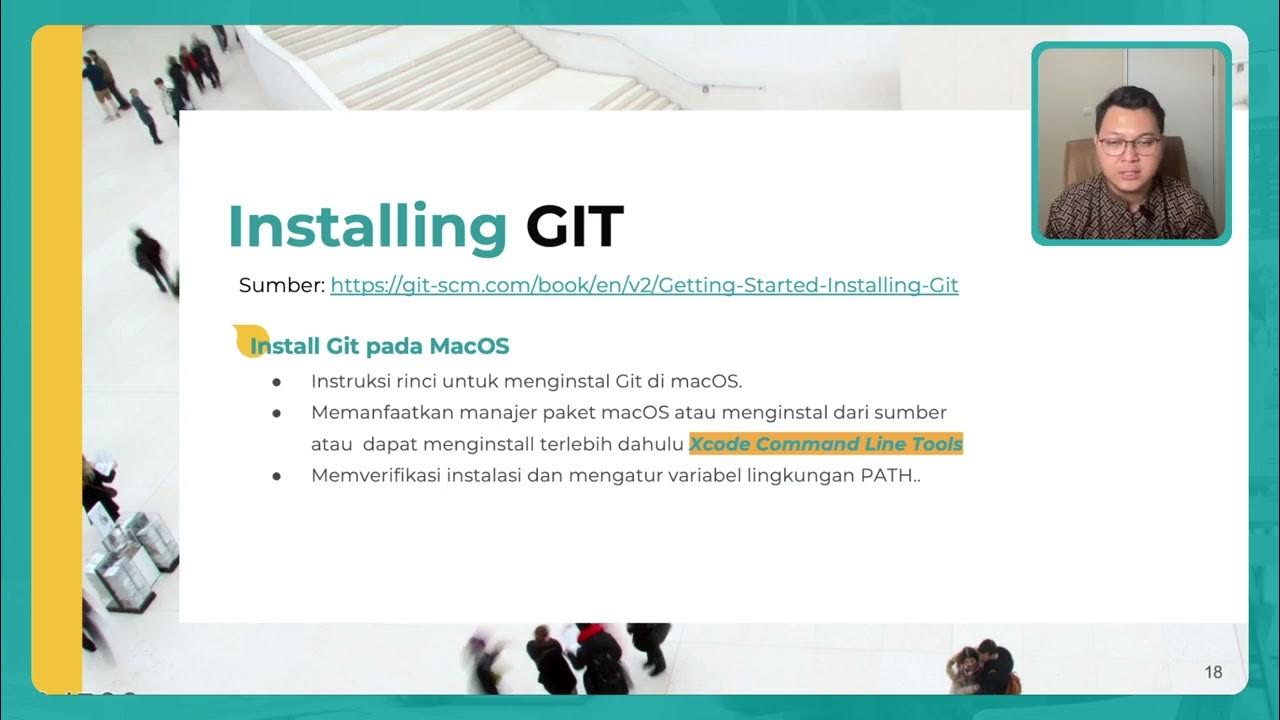99% of Developers Don't Get Git Rebase
Summary
TLDRIn this video, the speaker explains the importance of mastering Git rebase, a powerful yet misunderstood tool in version control. They compare rebase with merge, highlighting how rebase offers a cleaner, linear history by rewriting commit history, while merge adds a new commit to preserve the branching structure. The speaker also covers best practices, such as using rebase for local branches and avoiding it for shared branches, as well as introducing useful Git commands like stash and amend for managing commits. With insights on conflict resolution and interactive rebasing, the video aims to clarify the complexities of Git for developers.
Takeaways
- 😀 Git rebase rewrites history by applying commits on top of another branch, creating a clean and linear history without merge commits.
- 😀 Git merge preserves the original branching structure and adds a merge commit, resulting in a more complex commit history.
- 😀 Rebasing is useful for syncing your branch with the latest changes, cleaning up commit history, and making feature branches look like they were developed on top of the latest main branch.
- 😀 Rebasing should be avoided on shared branches to prevent conflicts, as it rewrites commit hashes, disrupting others' work based on the old history.
- 😀 Use Git rebase when working with local personal branches, where rewriting history is safe and doesn't affect others.
- 😀 Git rebase is typically used before merging a feature branch into a stable branch, to clean up the commit history and make it easier to review.
- 😀 Interactive rebase allows developers to reorder, squash, edit, drop, or split commits, giving full control over commit history.
- 😀 Git stash temporarily saves changes made in your working directory, allowing you to switch tasks or branches without losing your work.
- 😀 Git commit --amend allows you to amend the last commit, fixing mistakes like missing files or incorrect commit messages, without creating a new commit.
- 😀 Git rebase is powerful but controversial due to its potential to cause issues with shared branches. Always ensure team consensus before rebasing shared code.
- 😀 Effective pull requests should focus on one logical change, use clear commit messages, and avoid vague descriptions like 'update files'.
Q & A
What is the primary function of the git rebase command?
-The git rebase command is used to move or replay a sequence of commits from one branch onto another. It rewrites the commit history by pretending that the work started from a different base, rather than merging two branches with a new commit.
How does git rebase differ from git merge?
-Git rebase linearizes the commit history by applying commits on top of a target branch without creating a merge commit, while git merge preserves the original branch structure and creates a merge commit to combine the histories.
Why is using git rebase considered controversial?
-Git rebase is controversial because it rewrites commit history, which can cause conflicts when working with shared branches, as it alters commit hashes. This can disrupt other collaborators' work if not handled carefully.
When should you use git rebase?
-You should use git rebase when you want to keep the commit history clean and linear, incorporate the latest changes from another branch without a merge commit, or prepare a branch for merging (e.g., before a pull request).
What are the potential risks of using git rebase on shared branches?
-The risk of using git rebase on shared branches is that it rewrites commit history, which can cause other developers to face conflicts or lose work if they have based their changes on the old history. It's safe only for local, personal branches.
What is the role of interactive rebase in Git?
-Interactive rebase allows you to interactively edit commits in a branch, such as squashing multiple commits, reordering them, or editing commit messages. It provides full control over the commit history before submitting code for review.
What is the danger of force-pushing after rebasing?
-Force-pushing after rebasing can overwrite the remote branch with the rebased history, disrupting other team members and continuous integration systems. It should only be done with caution, ensuring no one else is working on the same commits.
What is git stash and how is it used?
-Git stash temporarily shelves changes you've made to your working directory so you can work on something else. It is useful when you're in the middle of a task and need to quickly switch contexts without losing progress. You can later restore stashed changes using git stash pop or git stash apply.
What does the git commit --amend command do?
-The git commit --amend command allows you to amend the last commit, either by adding new changes or editing the commit message. This is useful for fixing mistakes in the most recent commit.
What is the best practice for writing commit messages?
-A good commit message should clearly describe the change and its purpose. A useful guideline is to start the message with 'If applied, this commit will...', which helps provide context. Avoid vague messages like 'update files' or 'stuff.'
Outlines

Этот раздел доступен только подписчикам платных тарифов. Пожалуйста, перейдите на платный тариф для доступа.
Перейти на платный тарифMindmap

Этот раздел доступен только подписчикам платных тарифов. Пожалуйста, перейдите на платный тариф для доступа.
Перейти на платный тарифKeywords

Этот раздел доступен только подписчикам платных тарифов. Пожалуйста, перейдите на платный тариф для доступа.
Перейти на платный тарифHighlights

Этот раздел доступен только подписчикам платных тарифов. Пожалуйста, перейдите на платный тариф для доступа.
Перейти на платный тарифTranscripts

Этот раздел доступен только подписчикам платных тарифов. Пожалуйста, перейдите на платный тариф для доступа.
Перейти на платный тарифПосмотреть больше похожих видео
5.0 / 5 (0 votes)






